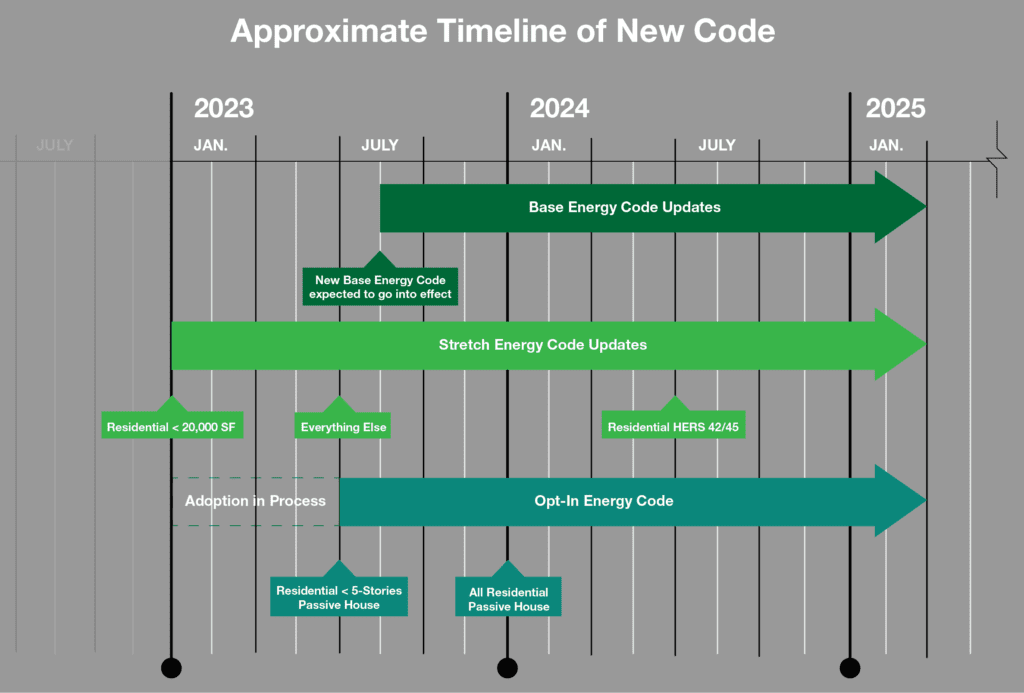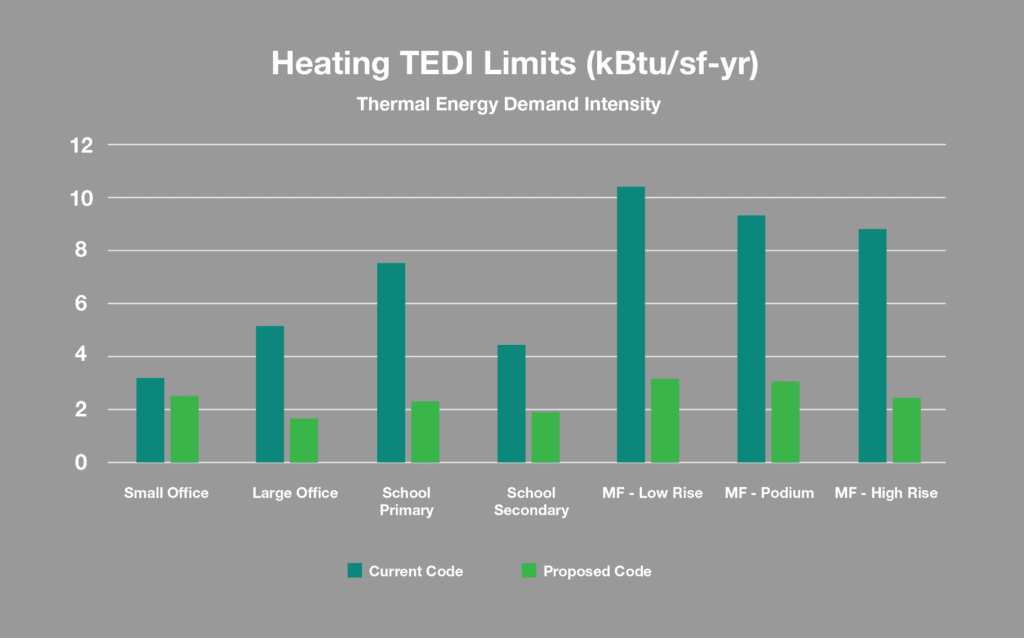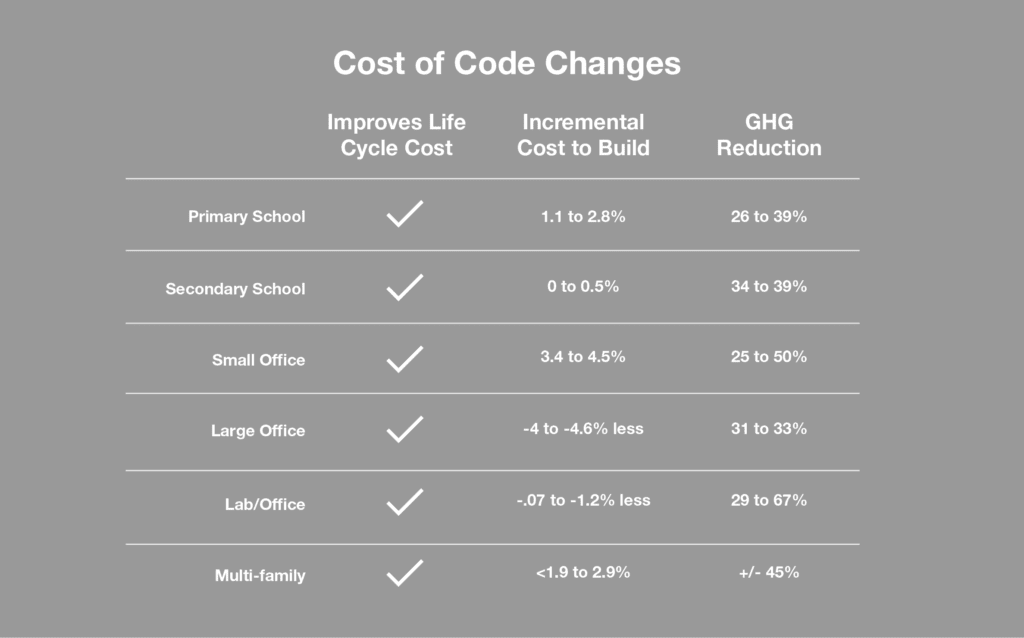Passive House Explained
Our three in-house Certified Passive House Consultants provide insights to the significant benefits and range of applications of Passive House standards.
View PostEnergy codes are rarely the hot topic of design discussions and yet, they heavily influence a range of building design decisions. This is especially true in Massachusetts which, since 2009, has led the nation in energy conservation and efficiency efforts with an augmented, or “stretch” energy code that has been adopted by 300 (90%) of cities and towns. 2023 marks the roll-out of an even more ambitious effort that will keep the Commonwealth on its net zero energy path to 2050. Below is a brief overview of what to expect for your future projects going into 2023 and beyond.
Roll out of the updated Massachusetts Code started in January 2023 and includes a new, Specialized Opt-in Energy Code with additional requirements that municipalites can adopt. The milestones for these updates are approximated below; we’re expecting:

For the three hundred municipalities that use the Stretch Code standards, most projects will need to be designed and built to Passive House Standards. Typical features of Passive House projects might include elements such as:
As these new building codes go into effect, architects, developers, and construction management companies will need to rely on the expertise of Certified Passive House Consultant (CPHC) professionals on many of their projects. CPHC architects and designers are trained to integrate building design principles with energy-use best practices right from project kick-off and CambridgeSeven is fortunate to have three on our staff.
The new code changes will come new limits on the energy used for building heating and cooling systems, which consume the majority of the energy for a building. As design professionals, we strive to lower the energy use intensity of all our buildings, and the new code will dramatically help in those efforts.
The updated Massachusetts Stretch Code allows specific TEDI (Thermal Energy Demand Intensity) limits based on project type. As you can see in the chart below, the new code significantly reduces these levels. To achieve these new regulations, many projects will be designed to Passive House standards or use the HERS (Home Energy Rating System) standards for residential projects.

As architects, to reach these new rigorous energy goals we will continue our decades-long commitment to excellence in design by increasing our focus on beautiful and thermally sound building envelopes and systems. We are thinking about building form, orientation, and façade design to passively improve efficiency and enhance building envelopes to reduce the demand on mechanical systems. We know that the bottom line is important to our clients and understand that these changes can initially appear in conflict with project budgets. Fortunately, these code changes can make good financial sense and help projects qualify for a variety of state and federal incentives that have been created to encourage further efficiency measures and help offset costs.

The chart above shows the projected cost of code changes based on project type. The upfront construction cost is likely to have small increases for project types like schools, small offices and multi-family residential. However, we are likely to see upfront cost savings for large offices and labs, which historically required large, heavy-duty mechanical equipment that will now be smaller and more efficient. We expect the new standards will also improve the overall life-cycle costs of all project types because these buildings use less energy for heating and cooling. It’s clear, too, that these changes mean significant reductions in GHG (greenhouse gas) emissions.
More info on the state code updates: https://www.mass.gov/info-details/stretch-energy-code-development-2022#new!-release-of-final-code-language-for-stretch-code-update-and-new-specialized-stretch-code-
Mass Save: https://www.masssave.com/en/business/programs-and-services/new-construction-and-major-renovations
https://www.phius.org/passive-building/what-passive-building/passive-building-principles
https://passivehouse-international.org/upload/Passive_House_Active_for_more_comfort_brochure.pdf
Our three in-house Certified Passive House Consultants provide insights to the significant benefits and range of applications of Passive House standards.
View PostAssociate Jacob Bloom discusses the Zero Carbon Certification from International Living Future Institute
View PostJacob Bloom, LFA tells us about the Living Future Institute and shares about CambridgeSeven's commitment to the Living Building Challenge, part of our ongoing focus on the far-reaching implications that our design choices can have on our community and the planet.
View Post